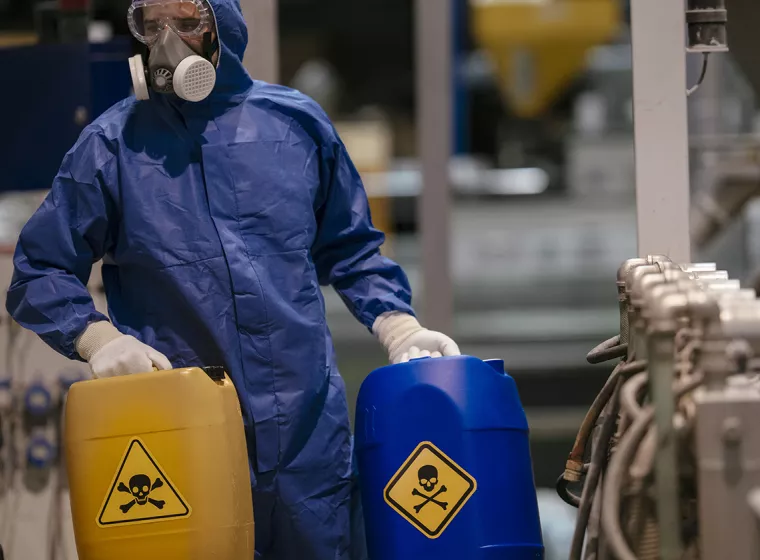November 12, 2024
Are your occupational exposure data sufficient to meet EPA requirements during and after existing chemical risk evaluations?
The Toxic Substances Control Act (TSCA) was enacted in 1976 to protect workers and communities from toxic chemicals used in industrial and other processes. Since then, the Environmental Protection Agency (EPA) has conducted scientific evaluations of potentially dangerous chemicals to determine whether they present risks to human health or the environment when used as intended. EPA relies on research data and data from the organizations and companies that use these chemicals to formulate their evaluations and, ultimately, inform regulations. The agency also considers the cost of using alternative chemicals, both in terms of the chemical itself and implementing and scaling new processes to industry.
TSCA chemical risk evaluations are used to formulate regulations around the use of these harmful chemicals. In some cases, these regulations may aim to reduce exposure or require workers to wear protective equipment. In other cases, EPA may decide to greatly limit the chemical's use or ban it altogether. In many cases, TSCA risk evaluations can spell drastic changes to the way chemical and other manufacturers interact with and use TSCA-regulated chemicals.
While the agency began risk evaluations in the late 1970s, EPA continues to conduct risk evaluations for major chemicals under TSCA, adding to them over time. For example, in March 2024, the agency issued its draft risk evaluation for formaldehyde, and in July 2024, it proposed designating five additional chemicals as high-priority substances for risk evaluations: vinyl chloride (CASRN 75-01-4), acetaldehyde (CASRN 75-07-0), acrylonitrile (CASRN 107-13-1), benzenamine (CASRN 62-53-3), and 4,4'-methylene bis(2-chloroaniline) (MBOCA) (CASRN 101-14-4).
This continuously evolving landscape, and the data EPA requires from industry to support its new and ongoing evaluations, can pose significant challenges for stakeholders, both in providing data on newly added chemicals under TSCA and meeting the requirements for the data itself. For example, will existing workplace chemical exposure data be sufficient? What information will manufacturers be required to submit with their data? Do manufacturers need to use different chemical sampling methods?
EPA requirements are evolving continuously, but manufacturers can take steps to prepare themselves for the agency's future data requests. They can audit their chemical exposure data to identify gaps, ensure the collection of exposure data is properly documented, and supplement their exposure data where needed, which may require the use of more sensitive sampling and analytical methods.
Under Section 4 Test Orders, EPA requires substantial documentation alongside exposure data, including descriptions of facility processes, worker activities, engineering controls, personal protective equipment, and quality control procedures.
Auditing and supplementing existing data
To inform the chemical risk evaluation process, EPA may consider chemical exposure data provided voluntarily by manufacturers. If data gaps have been identified, the agency may require companies to submit exposure data through a Test Order process under Section 4 of TSCA.
Under Section 4 Test Orders, EPA requires substantial documentation alongside exposure data, including descriptions of facility processes, worker activities, engineering controls, personal protective equipment, and quality control procedures. Exposure data that do not include this supporting information may be deemed of low quality and rejected for use in the risk evaluation process.
Organizations that work proactively to review their exposure data and gather additional data to satisfy EPA requirements if necessary could have a significant advantage, since auditing existing data and performing new exposure measurements take time and can lead to manufacturing delays down the line should a Test Order be issued. Companies and manufacturers that use chemicals identified as high-priority substances for TSCA risk evaluations can benefit from evaluating their existing monitoring data while placing increased focus on collecting accurate, robust data moving forward.
Addressing low method detection limits
For some chemicals undergoing the risk evaluation process, EPA has required very low detection limits for inhalation exposure sampling. These detection limits are based on provisional occupational exposure limits EPA is developing for TSCA chemicals. For some chemicals, both the exposure limits and the detection limits are much lower than existing Permissible Exposure Limits (PEL) or Threshold Limit Values (TLV) under the Occupational Safety and Health Administration or the American Conference of Governmental Industrial Hygienists. In response, manufacturers, and the analytical laboratories they partner with, may need to turn to new or more sensitive sampling and analytical methods. For some chemicals, new methods may even need to be developed and validated.
These new, low exposure and detection limits create sampling and analytical challenges. They also raise questions around how to appropriately communicate sampling results to workers when there's a discrepancy between EPA's limits and the existing occupational limits. Workers may wonder why EPA limits are so low, and why their exposure limits are beyond these limits. In such a case, it's appropriate to communicate clearly to workers about current occupational exposure study results and to accurately define their risks.
Meeting EPA requirements for TSCA chemicals
These challenges, among others, mean that those companies responding to or involved in occupational exposure studies for TSCA risk evaluations need to be adequately informed about EPA's data requirements and how to appropriately collect and interpret the information required. Companies should begin to gather data proactively but thoughtfully and can benefit from navigating the process early on. Chemical manufacturers will need to gather information on toxicology, epidemiology, and industrial hygiene related to any TSCA chemicals they use or produce. TSCA risk evaluations are constantly evolving and organizations that take a proactive approach to meeting EPA requirements could avoid costly manufacturing delays and even penalties.
What Can We Help You Solve?
Exponent's multidisciplinary teams of industrial hygienists, risk assessors, and toxicologists have extensive experience performing occupational and consumer product exposure studies. We can help you respond to EPA TSCA requests on data submissions, address Test Orders, and prepare human health and ecological risk evaluations for chemicals on the TSCA inventory.





![Toxicology & Mechanistic Biology [HS]](/sites/default/files/styles/cards_home_card/public/media/images/GettyImages-1337410437.jpg.webp?itok=S9udti02)





